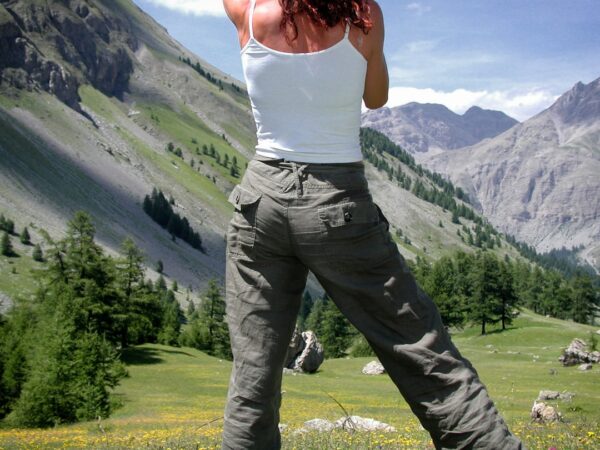Is a Hiking Cart the Missing Piece for Heavy-Load Adventures?
A hiking cart can be a game-changer for outdoor enthusiasts looking to haul gear efficiently and comfortably. Whether you’re trekking through national parks, strolling family trails, or tackling pilgrim paths, the right hiking cart reduces physical strain and increases carrying capacity. In this guide, we explore when to use one, how it works, and what features matter most for each terrain type.
What Is a Hiking Cart and How Does It Work?
A hiking cart is a purpose-built, off-road hauler designed to carry gear over trails without overloading your back. Unlike standard wagons or wheelbarrows, hiking carts are optimized for rough terrain, ease of transport, and ergonomic movement. Many feature large wheels, collapsible frames, and harnesses or handles for better control during long hikes.
There are two common types of hiking carts: single-wheel models, often secured at the waist for a backpack-like experience, and rugged two-wheel carts that function like outdoor strollers or trolleys. Brands such as Polaris Trailblazer, Toughbuilt Trekker, and the Monowalker Fatmate are gaining popularity among outdoor adventurers around the globe.
For adventurers carrying water, food, or camping supplies—especially in flat or accessible zones—a hiking cart lightens the load without sacrificing mobility.
When Using a Hiking Cart Makes Sense
Using a hiking cart can significantly improve your experience depending on terrain, distance, and trip goals. Here are common scenarios where hiking carts offer clear benefits:
- Family camping trips: Navigating from parking lots to lakeside campgrounds like those at Tettegouche State Park or Colorado’s Eleven Mile State Park becomes faster and more enjoyable with a hiking cart for coolers and tents.
- Backpacking base camps: When establishing a hub below destinations like Utah’s Angel’s Landing, you can move heavy items—like folding chairs or extra water—once with ease.
- Long-distance pilgrimages: Pilgrims walking the Camino de Santiago or similar routes appreciate the joint-friendly design of waist-mounted hiking carts, especially over weeks of walking.
- Beach and desert hikes: For places like White Sands National Park or California’s Guadalupe-Nipomo Dunes, hiking carts with wide tires glide over sand, reducing foot fatigue under intense sun.
Creative uses abound too. In Iceland’s volcanic highlands or Alaska’s tundra-covered expanses, travelers have successfully used modified ski trailers with wheels to transport gear where motorized access is restricted.
Where Hiking Carts Are Not Ideal
Despite their benefits, hiking carts are not suited for every environment. On rugged, narrow, or technical trails, carts quickly become more hassle than help. Trails like Italy’s Cinque Terre or Hawaii’s Kalalau Trail are too steep, rocky, or narrow to support wheeled gear.
Major switchbacks, steps, or sections requiring scrambling will block even the most durable carts. High-altitude trails like the Half Dome cables in Yosemite simply aren’t compatible with hiking carts, no matter how skilled the user.
It’s also important to research trail regulations. Wilderness zones in California and Colorado, or segments of the Pacific Crest Trail, often prohibit wheel-based movement to protect sensitive ecosystems. Call local rangers or review trail websites before packing a hiking cart.
Be cautious on trails with narrow bridges or log crossings. Just because a cart can carry 80 lbs doesn’t mean it can maneuver those spots. On such routes, carrying the cart itself may undo the benefit entirely.
Choosing the Best Hiking Cart by Terrain
Selecting a hiking cart depends on terrain type, trip length, and gear size. Below are some top-rated models trusted by seasoned hikers and guides:
- Flat or gravel trails (e.g., state parks or maintained forest roads): The Polaris Trailblazer XT uses a wide base and tough shockproof tires, ideal for hauling gear through Sleeping Bear Dunes or Michigan forest paths.
- Urban and semi-wild hiking areas (e.g., Golden Gate Park, suburban loop trails): For short-distance needs, the REI Co-op Trailgate Hauler folds compactly and rolls smoothly over stabilized surfaces.
- Sand and dunes (e.g., Outer Banks, Joshua Tree): Go for balloon-tire carts like the Sand Trekker Cart, which reduce sinkage and resistance.
- Long-distance travel: Hikers tackling European pilgrimage routes favor the Monowalker Fatmate—an ultra-efficient, waist-attached hiking cart with strong balance and minimal wheel drag.
Don’t just trust specs—test maneuverability on a local trail. A 120-lb capacity means little if the cart tips over during slight incline shifts. Always match the model to your terrain.
Trail Wisdom: Local Insights on Hiking Carts
Across hiking communities, locals have adopted hiking carts in creative and practical ways. In Oregon’s Mount Hood region, families use carts to haul meals and gear from trailheads to lakefront campgrounds like Trillium and Timothy Lakes.
In Sedona, Arizona, local parents use hiking carts for short trails, loading them with snacks, activity books, and water to encourage kids’ curiosity outdoors. In Mackinac Island’s car-free community, “forest rollers”—homemade trail carts—help locals commute or transport goods to art studios in remote scenic locations.
European outfitters, especially in Slovenia’s Triglav National Park, now rent hiking carts with fat tires to travelers. One Ljubljana-based family reported their kids enjoyed hiking more once they got turns riding in the empty cart on the return leg.
Pros and Cons of a Hiking Cart: Is It Right for You?
Benefits of Using a Hiking Cart:
- Relieves pressure on shoulders, knees, and lower back
- Increases total gear-carrying ability—ideal if hiking solo or with small children
- Makes organizing and accessing gear on the trail easier
- Encourages more inclusive hiking—great for seniors or those with mobility concerns
- Multi-use for beach days, festivals, and backyard projects
Challenges to Consider:
- Unsuitable for rugged, stair-heavy, or narrow terrain
- Must be packed evenly to ensure balance
- May be banned from certain trails due to environmental policies
- Can take up cargo space during transport
Ultimately, a hiking cart isn’t for every route—but with proper planning, it opens up longer, less strenuous adventures and brings more people into the outdoors comfortably.
Explore Smarter with the Right Hiking Cart
Adding a hiking cart to your adventure gear enhances comfort, pace, and what you can bring along. Whether you’re hauling painting supplies to a remote overlook, managing toddler gear on forested loops, or setting up base camp in a national park, a well-chosen hiking cart can make hiking more sustainable and enjoyable.
Smart planning is key. Match your hiking cart to your destination, test-drive it locally, and always check trail conditions in advance. When used wisely, a hiking cart shifts hiking from a strenuous chore to a memorable, gear-friendly journey.





